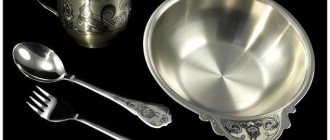Sterlet is a famous fish from the sturgeon family. Since tsarist times, it has been valued for its pristine taste and quality. It is rich in amino acids, contains a lot of calcium and vitamins. Has a beneficial effect on human health. Nutritionists recommend eating it at least once a week.
Sterlet remains a popular product to this day. Meat from this fish can be boiled, baked, fried, stewed. But in order for the sterlet dish to turn out tasty, it is necessary to observe certain features when cleaning it.
It is prohibited to catch sterlet in the natural environment, as it is listed in the Red Book.
How to properly clean at home
People have long learned to breed this fish in production. Typically the weight of a carcass is 1-2 kg, but in the natural environment it can reach 30 kg. The meat is considered environmentally friendly, since sterlet can only live in clean water, this is another reason for the high quality of the meat.
The structure of the fish differs from others in the presence of growths, spines and the absence of scales as such. It is very small, so some people don’t clean it off. Its taste directly depends on the correct processing of sterlet. So be sure to read the rules before you start cleaning it.
When cleaning a carcass, it is necessary to take into account the peculiarities of its structure. The fish does not have a backbone; instead, it has spinal and rib bones. You will need a sharp knife, a scraper, a cutting board and rubber gloves. If the fish is alive, then to facilitate the process, it is recommended to place it in the freezer for one hour before cleaning.
- Place the sterlet in a container where it will completely fit.
- Pour boiling water over it, this is necessary to remove mucus from the surface; hot water will soften the scales and they will be easily removed.
- Clean the carcass from mucus and wipe with dry cloths.
- Using a knife, remove growths (bugs) on the back and sides, moving from the tail to the head.
- Next, use a scraper or knife to clean off the scales.
- Rinse with water and dry again with dry cloths.
- The sterlet is ready for gutting.
You can see it more clearly in the video:
You can also remove mucus with salt. To do this, just sprinkle the fish generously with salt, leave for 20 minutes, and then rinse with warm water. But you need to act carefully so as not to get hurt by the sharp growths of the sterlet.
Features of the effect on the human body, benefits, harm
Sterlet is very useful for adults because it contains a lot of calcium. It stimulates mental activity, improves the condition of hair, skin, and nails. If you have frequent mood swings, nervous disorders, or pathologies of the digestive system, you should try to include this product in your weekly menu more often.
Pregnant women and nursing mothers are allowed to eat fish, but with caution, as it can cause allergic reactions. The product, rich in protein and fatty acids, strengthens the bone and nervous systems, improves mood, and relieves depression.
This fish can be given to children from the age of one, preferably baked. Soufflés are often made from it, but you can offer the dish to kids in pieces so that they can chew them on their own.
The product is rich in calcium, necessary for normal skeletal development.
Elderly people should eat sterlet more often, because it:
- Strengthens the nervous system.
- Allows you to maintain visual acuity by improving blood supply to the eyes.
- Increases brain activity.
- Helps maintain normal body weight.
- Reduces the risk of heart attacks and strokes.
- Prevents the occurrence of cancer.
The absence of carbohydrates and zero glycemic index allow diabetics to include it in their diet. A large amount of proteins normalizes insulin production.
How to gut a sterlet
When gutting sterlet, you must act carefully so as not to touch the bile. If the bile ruptures, the meat will acquire a bitter taste and a yellowish tint.
If the bile is still damaged, sprinkle the area with salt, rub and rinse with water.
To gut, follow these steps:
- Place the carcass on a cutting board, back down.
- Holding the head, make a cut from the anal fins to the head. The head can be cut off immediately.
- Be careful not to touch the bile, eggs or milt.
- After opening the belly, remove the giblets. If you have caviar, separate and salt it.
- Remove the film under running water and rinse the fish.
Another incision on the peritoneum can be made from the head to the anal fins. To do this, turn the knife upside down, pierce it at the head and make a longitudinal cut. If the skin is unnecessary, pour boiling water over it and, starting from the head, remove it. Thanks to hot water, the skin will easily separate from the carcass.
Stroganina
For such a traditional culinary masterpiece of the northern peoples, the carcass must be prepared in this way: remove the skin, remove the giblets, pull out the viz, remove the gills. Next, you need to cut off part of the head at the widest point and immediately freeze the sturgeon.
To make stroganina, the product is placed on a board with its head and a thin layer of pulp is cut from top to bottom along its entire length using a fairly sharp knife, which is wrapped into a ring. After cutting off the required amount of sliced fish, you need to immediately put it in the freezer. The tastier pulp is in the belly area.
How to remove a vizig
It is the removal of the vizigi that causes stupor in inexperienced housewives. The viziga is a notochord located along the cartilage of sturgeon fish, it is white in color and is easily distinguished externally.
It is necessary to remove the chord and the sooner the better, since after killing the fish, poisons that are toxic to the human body begin to accumulate in it.
There are several ways to remove vizig. For this procedure you will need forceps or pliers.
Removing vizig through the tail
This method is well suited for small carcasses weighing up to 1 kg.
- Using a knife, cut off the tail fin or make an incision so that the cartilage is cut through.
- In the place of the incision you will see a vizig, it is white.
- Gently pry it up with a knife or large needle.
- Using tongs or pliers, grab the tip and gently pull out.
The chord must be pulled out carefully so that it does not break. If this does happen, immediately rinse the meat under running water. Find the break point, make a cut and repeat the procedure again until the chord is completely removed.
Removing the vizigi through two incisions
This method is good for large fish.
- Place the sterlet on a cutting board, back down.
- On the inside, make an incision at the head and tail, so that the cartilage is also cut through.
- Carefully pull out the chord.
- The fish is ready for cutting.
If the whole carcass is going to be cooked, make two cuts. If in pieces, then for a large carcass you can make another cut in the middle.
Where to look?
As mentioned earlier, viziga is found in those fish that belong to the sturgeon family. These are, first of all, sterlet, stellate sturgeon, beluga, kaluga, and thorn. The fish of this family are quite large. For example, the beluga reaches 4 meters in length.
Sturgeons belong to the subclass of cartilaginous ganoids. They are freshwater or anadromous. They are distinguished by high fertility. Due to their special value, representatives of sturgeon are called “red fish”. Their meat, black caviar, bladder, and, in fact, viziga are of great commercial importance. We have already looked at what this is.
Sterlet cutting
The cutting will depend on the intended dish:
- to use in pieces, cut the carcass into portions;
- if the head is not needed, then remove it immediately. It can then be used to prepare fish soup;
- if the head remains, remove the gills and fins.
Filling sterlet
- Place the fish on a cutting board and cut off the head and tail fin.
- Remove the skin by pouring boiling water over it.
- Using a sharp knife, carefully cut the fillet from one side along the vertebrae as close to the cartilages as possible so that there is not a lot of meat left on them. Help yourself with your hand, holding the fillet for an even cut.
- On the second part, remove the vertebra.
- The fillet is ready.
There is another way to cut the fillet:
- Remove the head and tail fin.
- Inside the carcass, make a cut along the vertebrae from head to tail.
- The fish will split into two parts.
- Carefully cut off one half first.
- Separate the other half from the vertebral cartilage.
The cut parts are not thrown away; they are good for making fish soup.
For stuffing
Stuffed sterlet will serve as a decoration for any table. However, before doing this, it is necessary to properly separate the skin and cut the fillet.
At the stage of cleaning the fish, before removing the giblets, you should soak the carcass in boiling water for 2-3 minutes. When the meat has lightened, you can start cutting. Gently squeeze the bugs and rotate them around their axis, tearing them away from the skin. Make a light cut around the head and remove the skin from the carcass with a stocking, so that the tail fin remains on the skin.
Next, cut as described above. Add the necessary filling to the minced fish and fill the skin of the carcass with it.
You can prepare a cut sterlet carcass for shish kebab, steak, grilled, sliced meat, or use it for smoking and baking.
For stuffing
To make stuffed sterlet, you do not need to cut off the skin. The spinal part must also be left, therefore it is unacceptable to remove the “bugs”. In this situation, it is necessary to clean off the scaly layer using boiled liquid. Seafood for 3−5 min. placed in boiling water; the skin will become lighter, then it will become easier to remove it. To remove the “bugs”, you will have to squeeze each of them a little, then turn it around an axis: this method allows you to easily remove the part of the fish that is not required for making the treat. An incision is made in a circle near the head, and the skin is removed with a stocking towards the lower part.
You need to thoroughly wash the sterlet from the inside. In addition, it is worth removing the poisonous vizig.
Yandex pictures
Cleaning and cutting frozen fish
Frozen sterlet does not need to be thawed before cutting. In addition, not completely defrosted fish is easier to cut into pieces. Due to the fat content of the fish, the skin does not freeze, it is easy to peel off, and besides, it does not need to be doused with boiling water, since there is no mucus on the frozen carcass.
- Place the fish on a cutting board.
- Cut off the head; if the fish is very frozen, chop it off.
- Taking the tail, cut off the bugs.
- Continuing to hold the carcass upright, make light cuts near the tail and remove the skin.
- Make a longitudinal cut on the belly and remove the giblets.
- Carefully remove the vizig.
Tips for choosing
Sturgeon is an expensive fish, the taste and benefits of which depend on the freshness and proper storage of raw materials. Chilled carcasses should have a pleasant fishy smell without foreign impurities. The gills are dark colored without plaque or mucus, the eyes are transparent. In steaks, the skin fits tightly to the meat, and when you press on the flesh, the pit immediately straightens out.
It is more difficult to choose frozen raw materials. The ice glaze should be thin, transparent, and free of blood and debris. There should be no “rusty” spots or smudges on the surface of the carcass or steaks. If you have the slightest doubt, you can ask the seller for quality certificates for the goods.
Sterlet storage
Sterlet is one of the varieties of fish that cannot be stored for a long time. A few facts about storing sterlet:
- fresh shelf life - up to 2 days;
- if the fish is in marinade or salted water, it can be left in the refrigerator for up to 3 days;
- the cut carcass cannot be frozen or delayed for a long time; it should be cooked on the same day and preferably immediately after gutting;
- It is advisable to cook the fish head within 1-2 hours after separating it from the carcass;
- frozen carcass can be stored for 5-6 months;
- Frozen sterlet cannot be re-frozen;
- Do not wrap fish in plastic; it is better to use containers or bowls with a lid;
- keep fish in the refrigerator away from other foods so that the meat does not absorb foreign odors;
- if you still had to postpone cooking, store the meat in ice;
- to preserve the juiciness and freshness of the fish, you can grease it with olive oil;
- Before freezing, it is better to gut fresh fish first;
- If the fish has an unpleasant odor or a coating has appeared, it is better not to eat such fish to avoid poisoning.
To make storage easier, prepare salted ice. Dilute salt in water, but not too much, so that it does not affect the taste of the meat. Freeze in an ice cube tray. It is advisable to do the preparation before purchasing the fish.
Smoking
Before smoking sterlet at home, you need to remove the insides of the product, cut off the fins, and cut out the gills. Rinse thoroughly, grate with coarse salt and pepper, and place in the refrigerator for 24 hours.
After 24 hours, wash in water to remove salt. Dry or wipe with a paper towel. Before cooking, coat with vegetable oil. For smoking, it is advisable to use purchased apple or pear wood chips. Cook until golden brown.
Yandex pictures
Jewelry Review
4 minutes Yulia Litvinenko 3
Sturgeon, sterlet, stellate sturgeon, and beluga belong to the sturgeon family. A distinctive feature of the variety is the presence of viziga. It is a chord, made of dense, soft tissue, looks like a cord, consists of connective tissue and cartilaginous parts. Traditionally used for preparing various dishes - pies and kulebyak.
Today, due to the abundance of fish varieties and semi-finished products, viziga is often disposed of as waste along with the entrails and gills. Housewives should know whether the sterlet vizig is poisonous or not. It can be eaten, it is rich in vitamins A, C, group B, minerals - calcium, phosphorus, sodium.
The chord of sturgeon fish is not poisonous, but it spoils much earlier, therefore the shelf life of a fresh product or ready-made dish is reduced.











